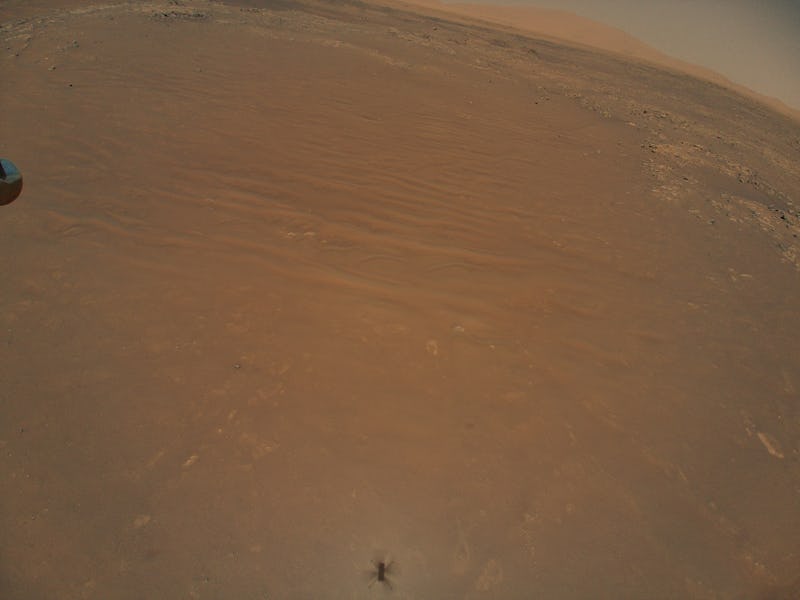See if you can spy this Mars Easter egg snapped by NASA’s Ingenuity
NASA's Ingenuity helicopter takes an aerial photo that let's viewers hunt for the Perseverance rover on the ground

NASA released its own version of Where’s Waldo?, courtesy of the space agency’s Ingenuity helicopter.
On August 11, Ingenuity climbed to an altitude of 39 feet above Mars and snapped a photo of the rippled and russet plains of the Jezero Crater. Somewhere in that expanse of dunes, dust, and rocks lies NASA’s Perseverance rover — if you can spot it.
It’s a fun visual challenge, but it’s more than just a cool view for NASA scientists, who, thanks to Ingenuity’s aerial reconnaissance, can now chart better courses for Perseverance as it pursues its mission of seeking signs of possible life on Mars.
Where’s Perseverance?
It can be tough to know where to start looking for Perseverance in the photo among the sandy plains, ring of rock outcroppings, and large dunes. Thankfully, NASA provided some clues for finding the rover in a media release.
Start by looking for Ingenuity’s shadow at the bottom of the photo, just right of center. If you follow the line from the shadow straight up to the top of the photo and look slightly further right in the rocky dune field, you’ll see a white speck. That’s no rock.
“That’s what a Mars rover looks like from about 1,600 feet (500 meters) away and 39 feet (12 meters) up,” the release notes.
NASA’s Perseverance rover as capture from the air by the Ingenuity helicopter over Mars on Aug. 11, 2021.
Ingenuity has over-performed — Ingenuity’s portrait of the Perseverance rover came as part of the drone’s 11th flight, and the helicopter’s latest feat of over-performance has scientists thrilled.
Ingenuity’s original mission was a technology demonstration to prove a craft could fly in the Red Planet’s thin atmosphere and send data back to Earth. The four-pound helicopter accomplished that goal with aplomb on April 19, when the vehicle’s carbon fiber rotors carried it 10 feet above the Martian ground and held it there for 39 seconds — the first powered and controlled flight on another planet.
The aerial vehicle has now transitioned to an operations demonstration, using its camera to plot new courses for the rover and map Jezero Crater from above. The August 11 flight lasted for more than two minutes as Ingenuity flew at around 11 miles per hour to its eighth airfield. The helicopter will scout geologically interesting targets for the Perseverance rover.
NASA estimates the solar-powered Ingenuity can keep flying every few weeks for some time. Its landing gear is expected to handle up to 100 flights — assuming the extreme cold or unforeseen events do not damage the helicopter.
The long-term operation of Ingenuity could be a great boon for the Perseverance rover in its mission to seek signs of ancient life on Mars.
Just in case you still didn’t see it.
Perseverance still hunting for Martian life — Ingenuity and Perseverance landed on Mars together on February 18, with the Jezero Crater selected as the mission target due to its possibly holding water around 3 billion years ago. The rover will extract Martian soil samples and cache them for retrieval by a later sample return mission to bring the Mars dirt home to Earth for analysis.
The rover’s primary mission is expected to last at least one Martian year — 687 Earth days — and it may need all the time and help it can get: Its first attempt at gathering a sample failed.
Maybe having Ingenuity as an eye in the sky will help.